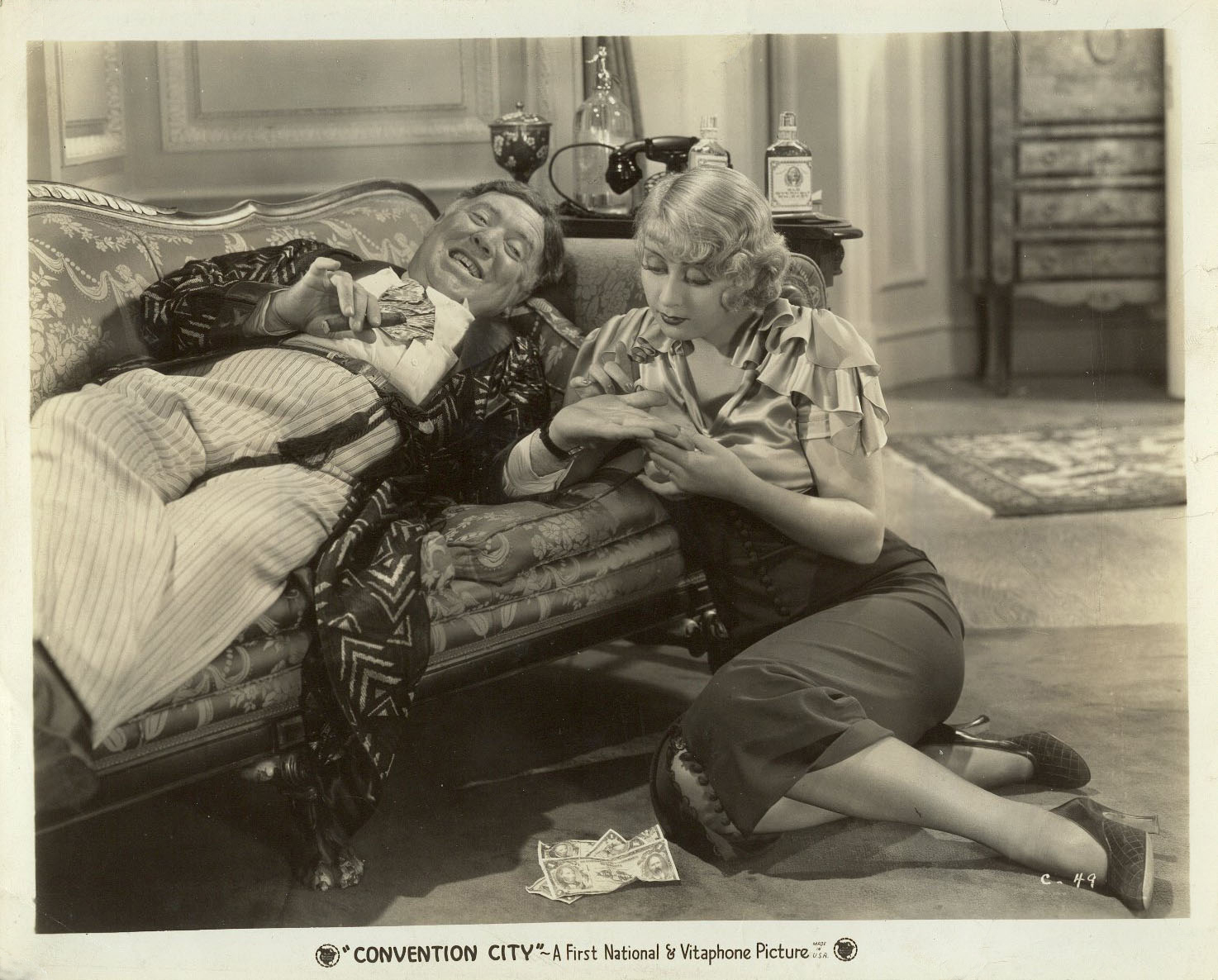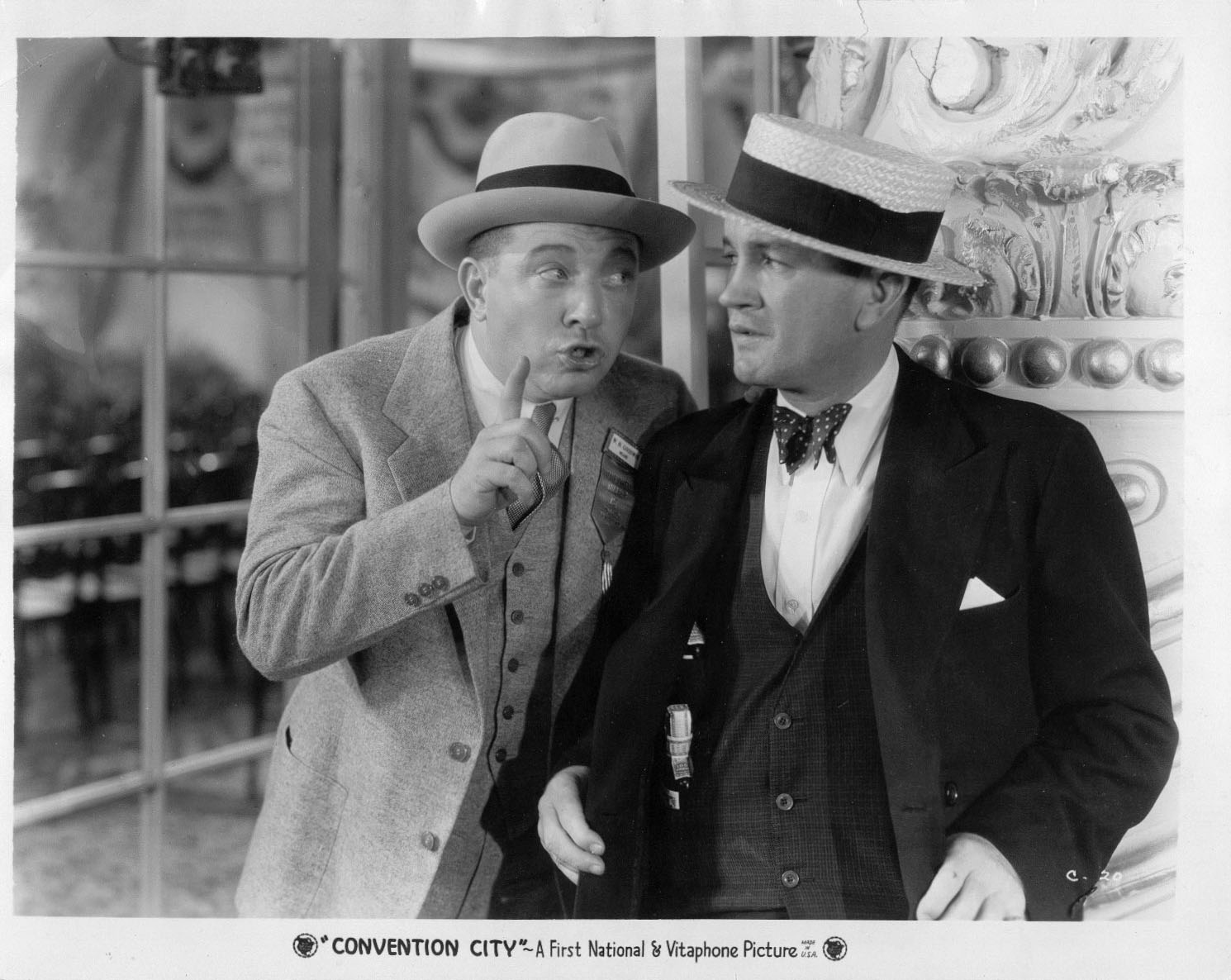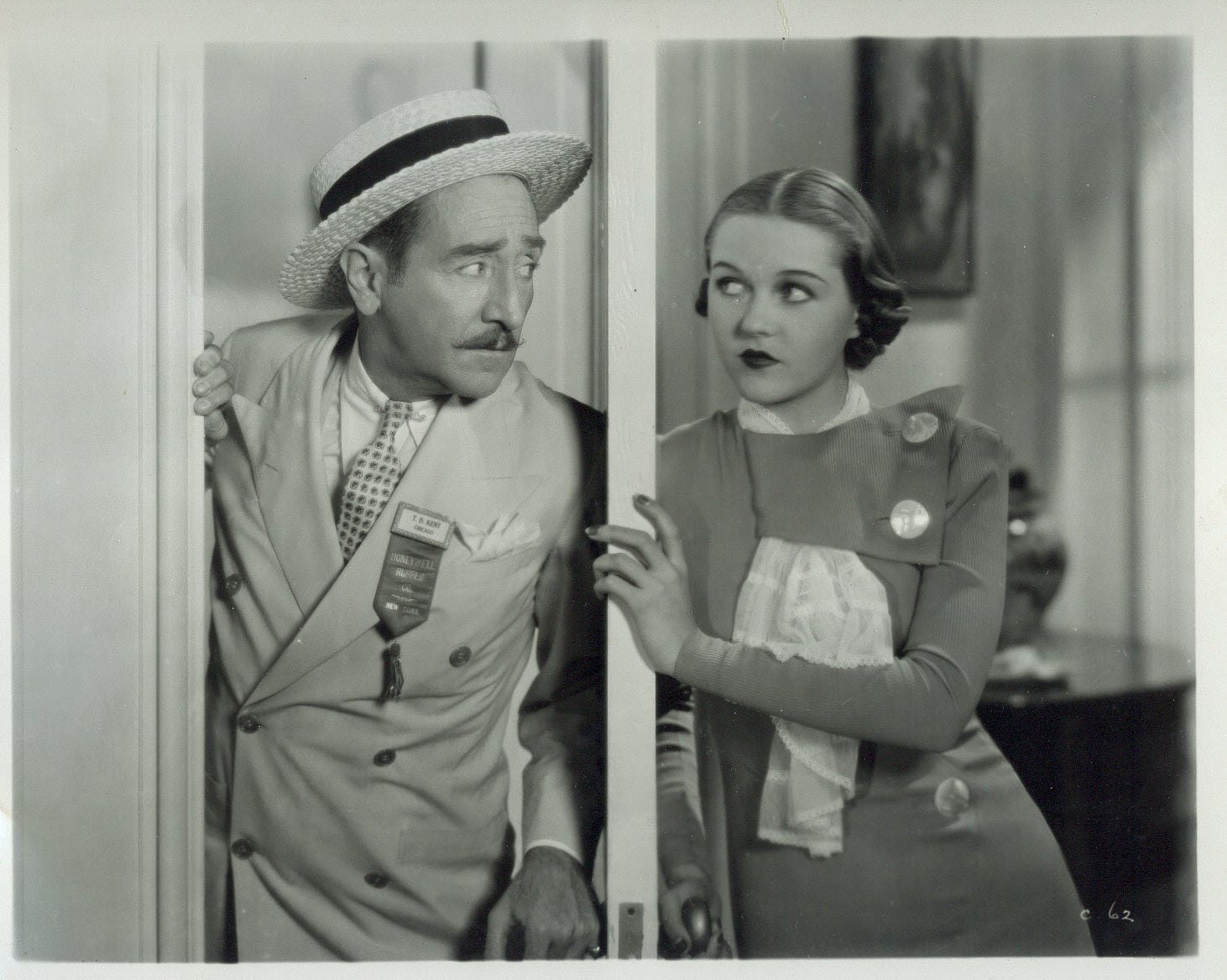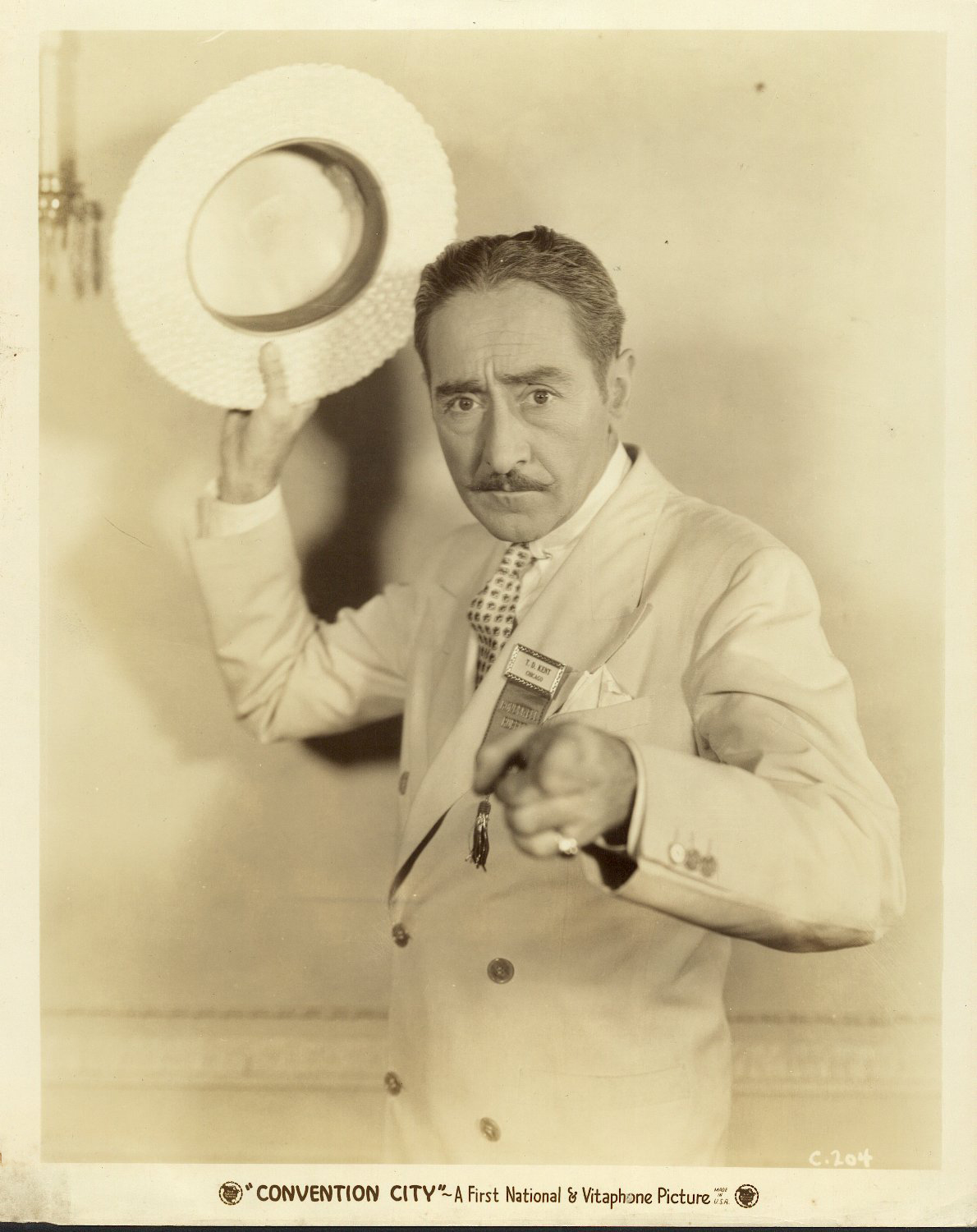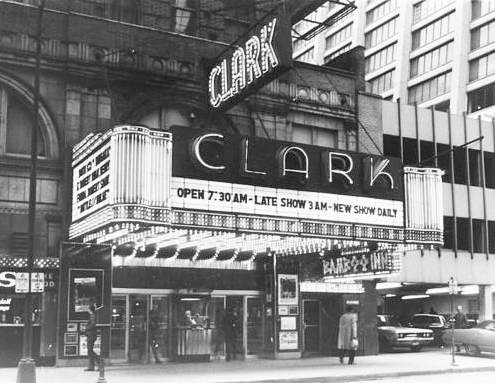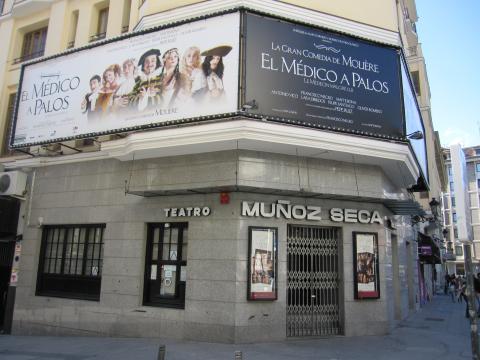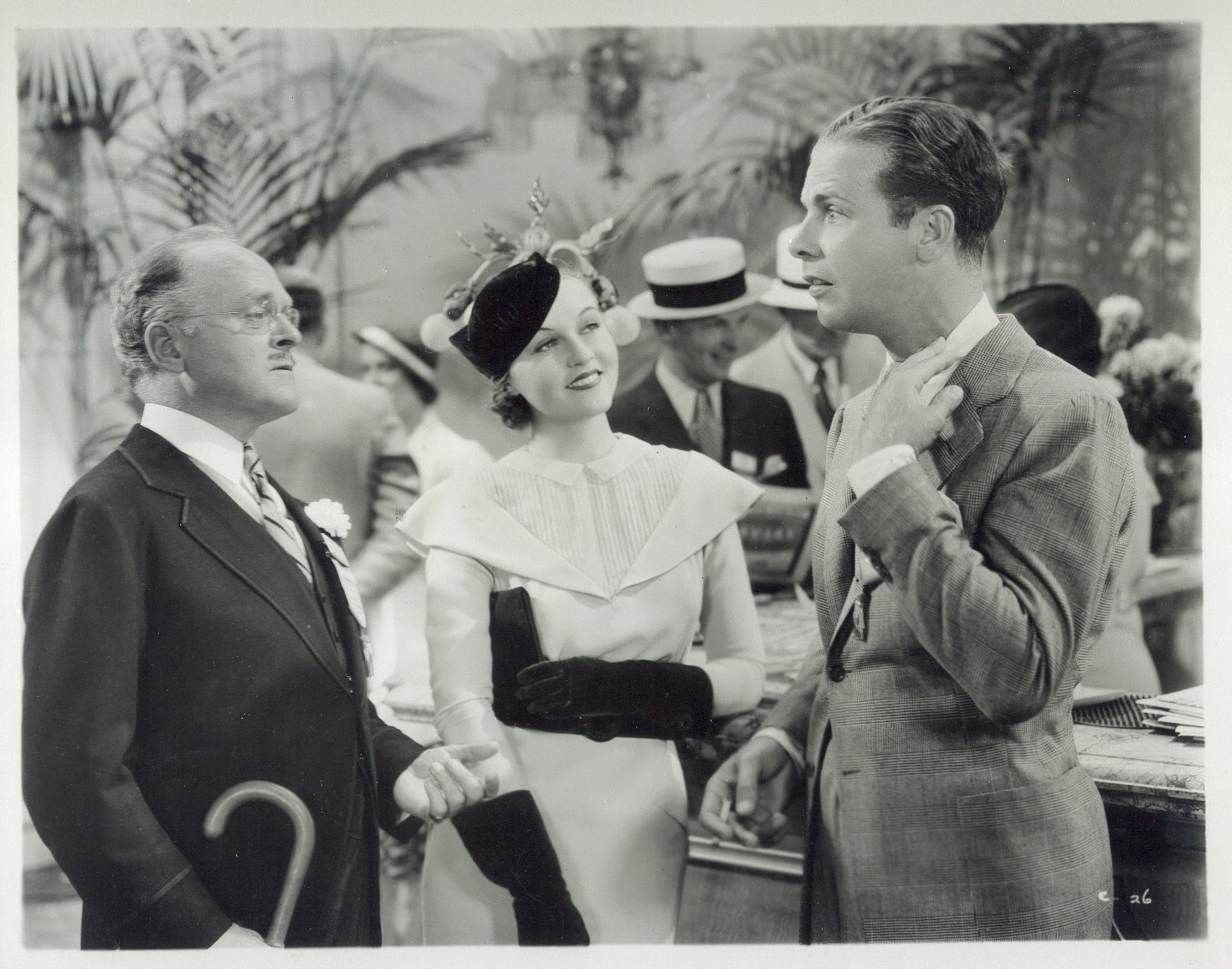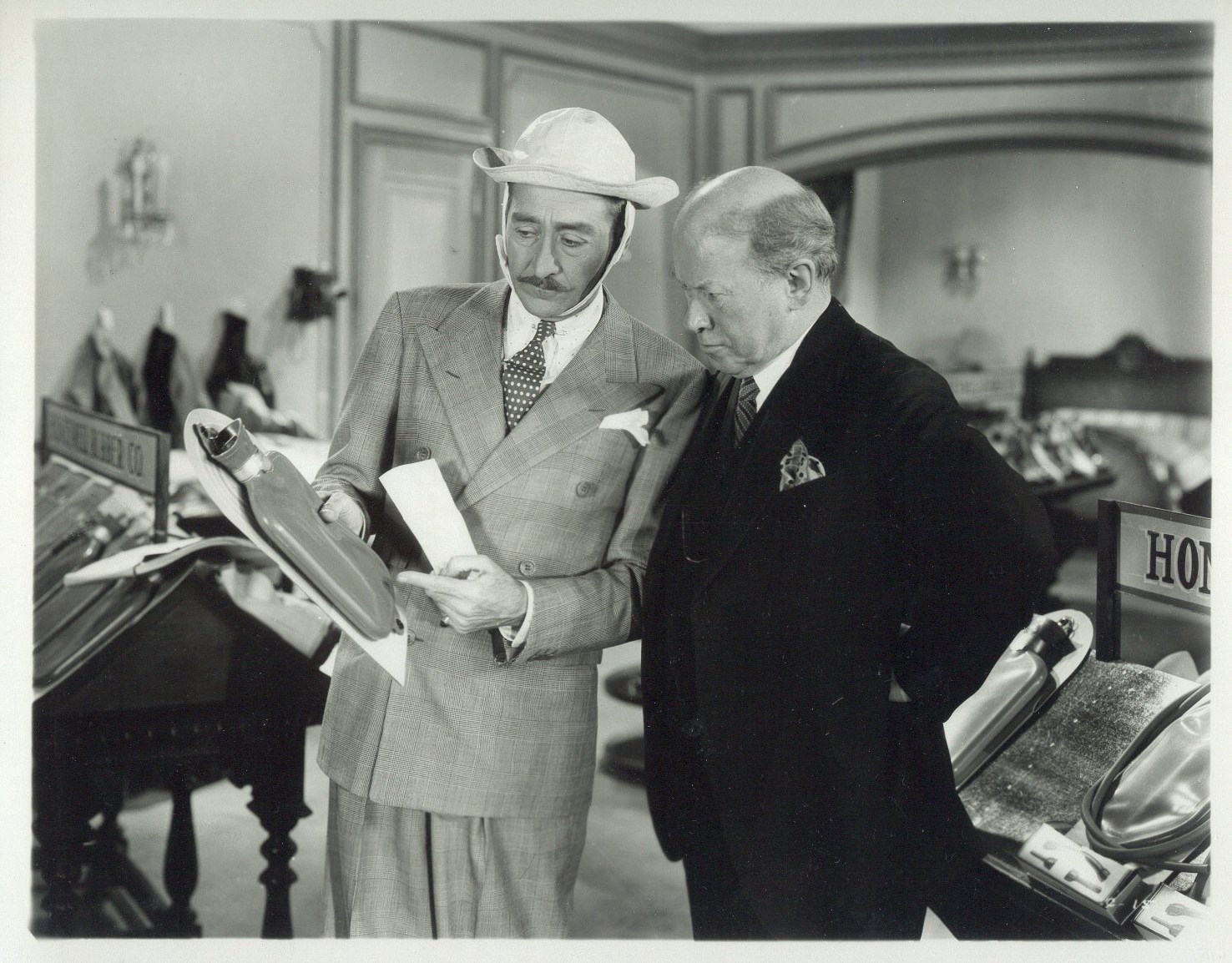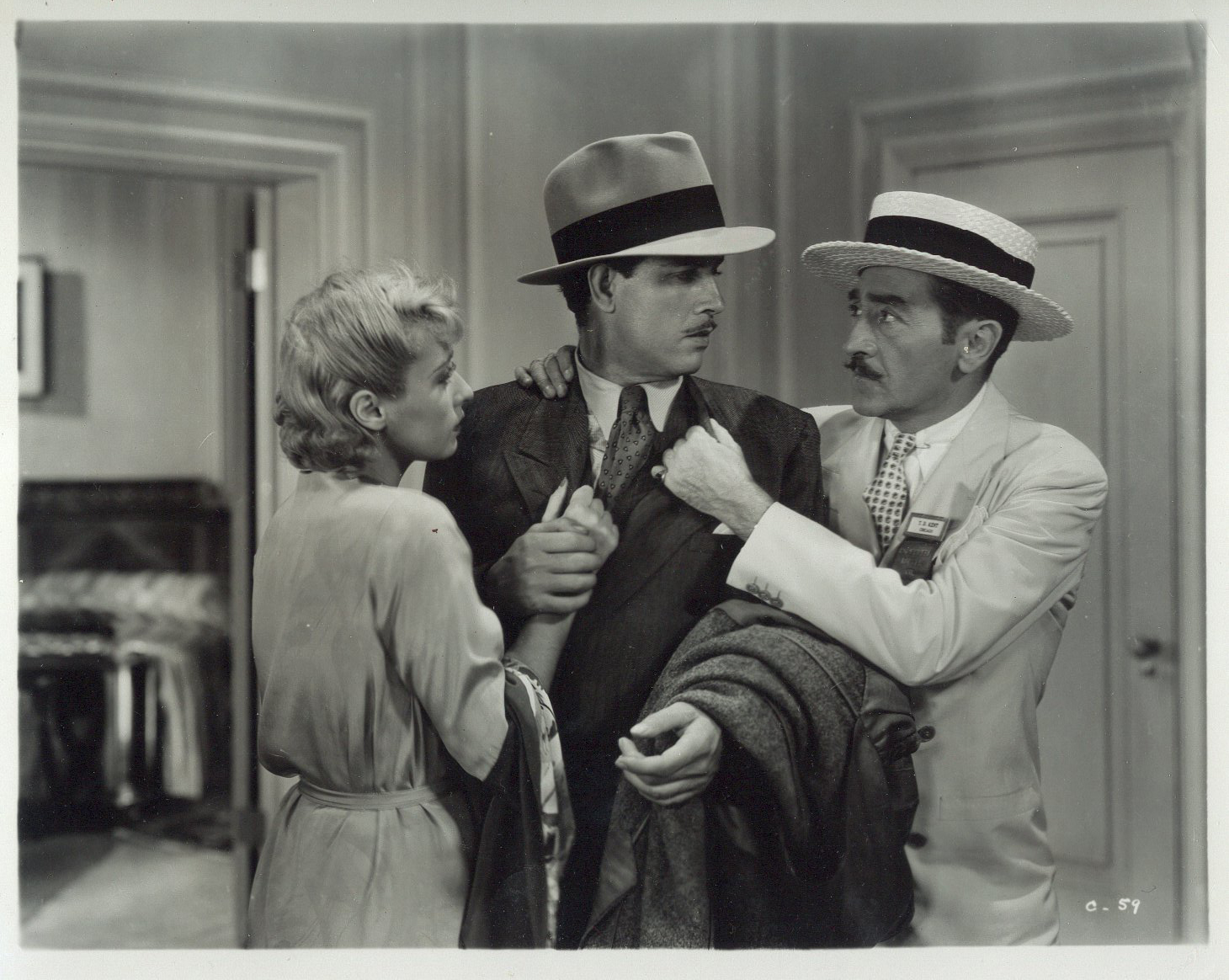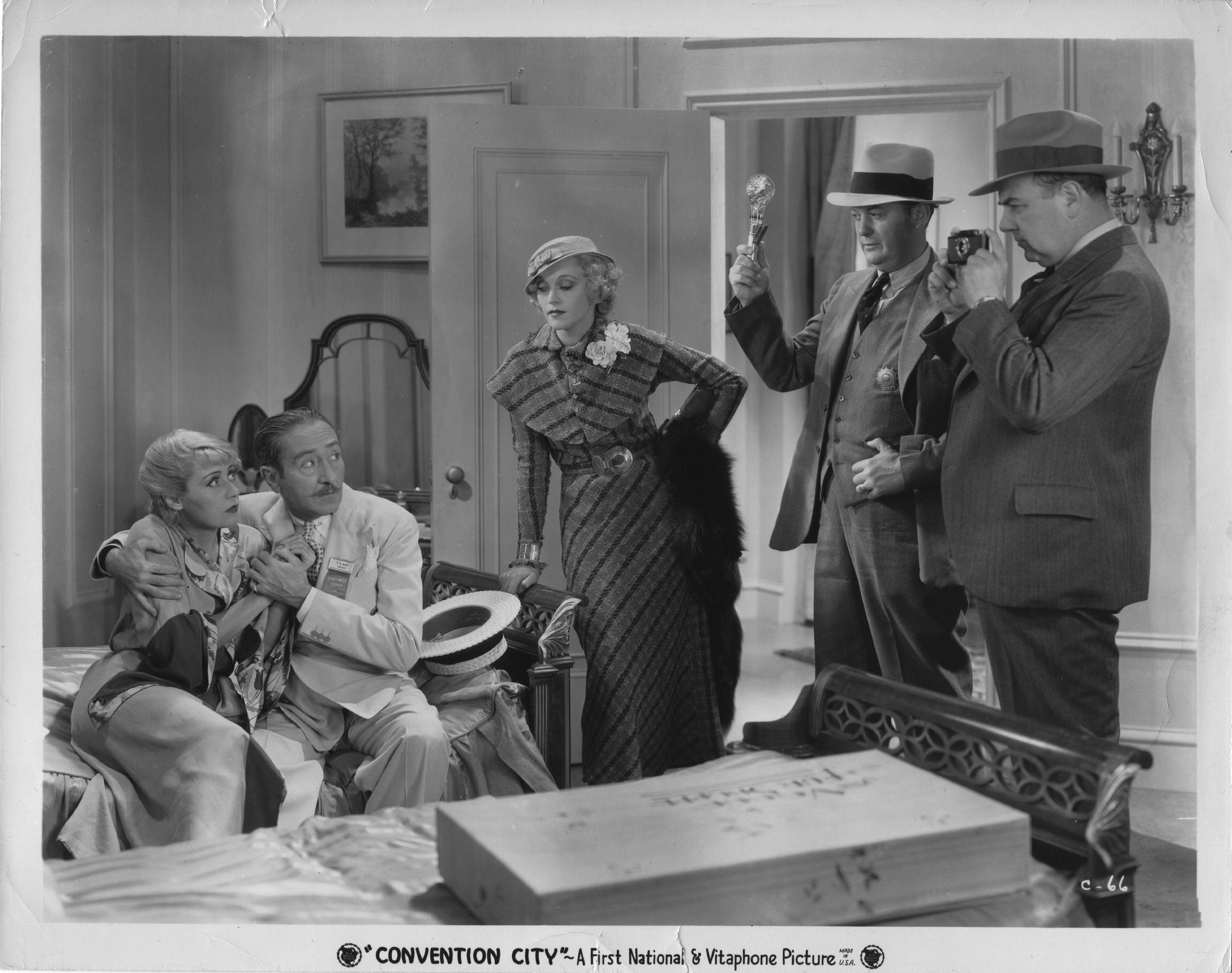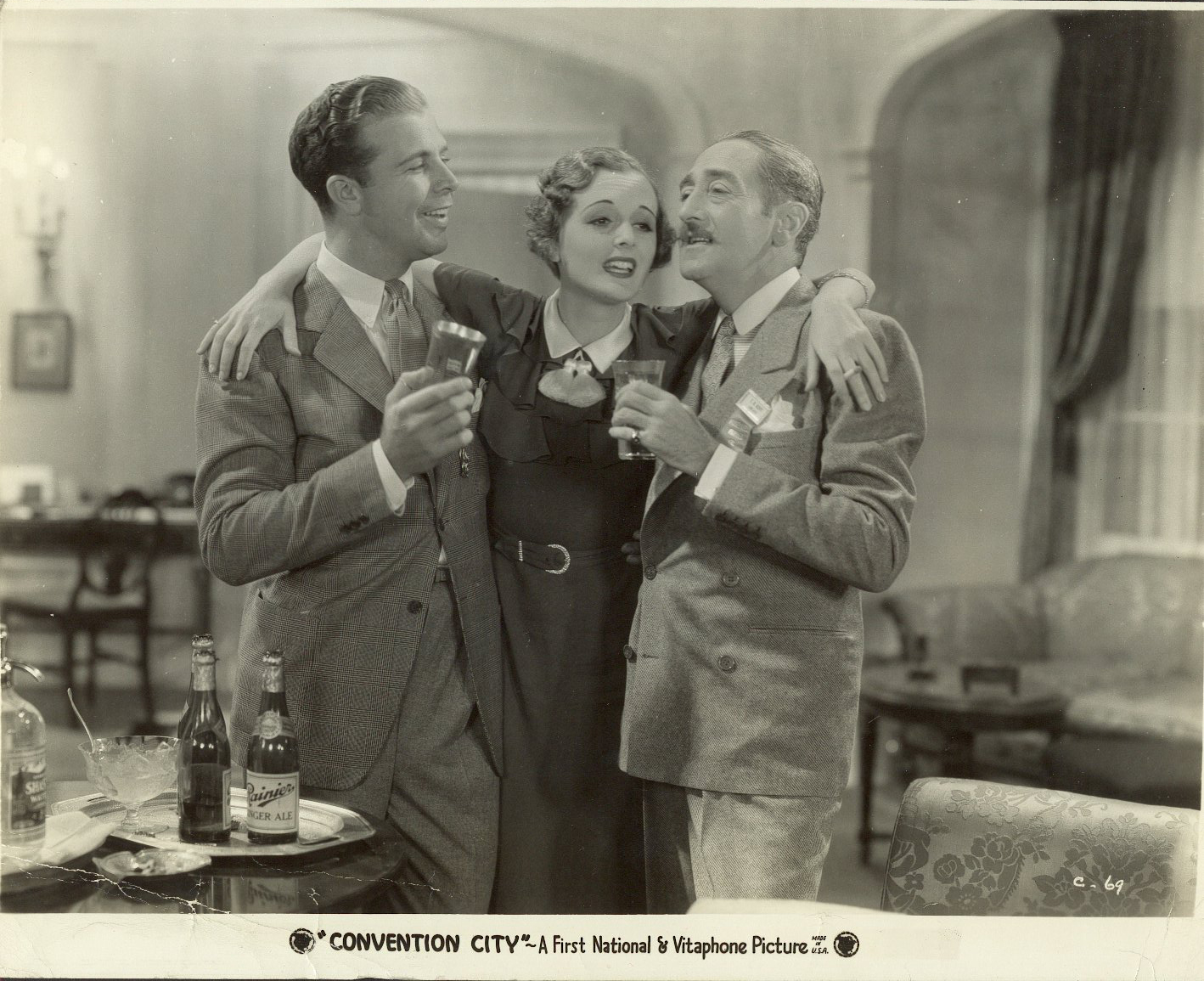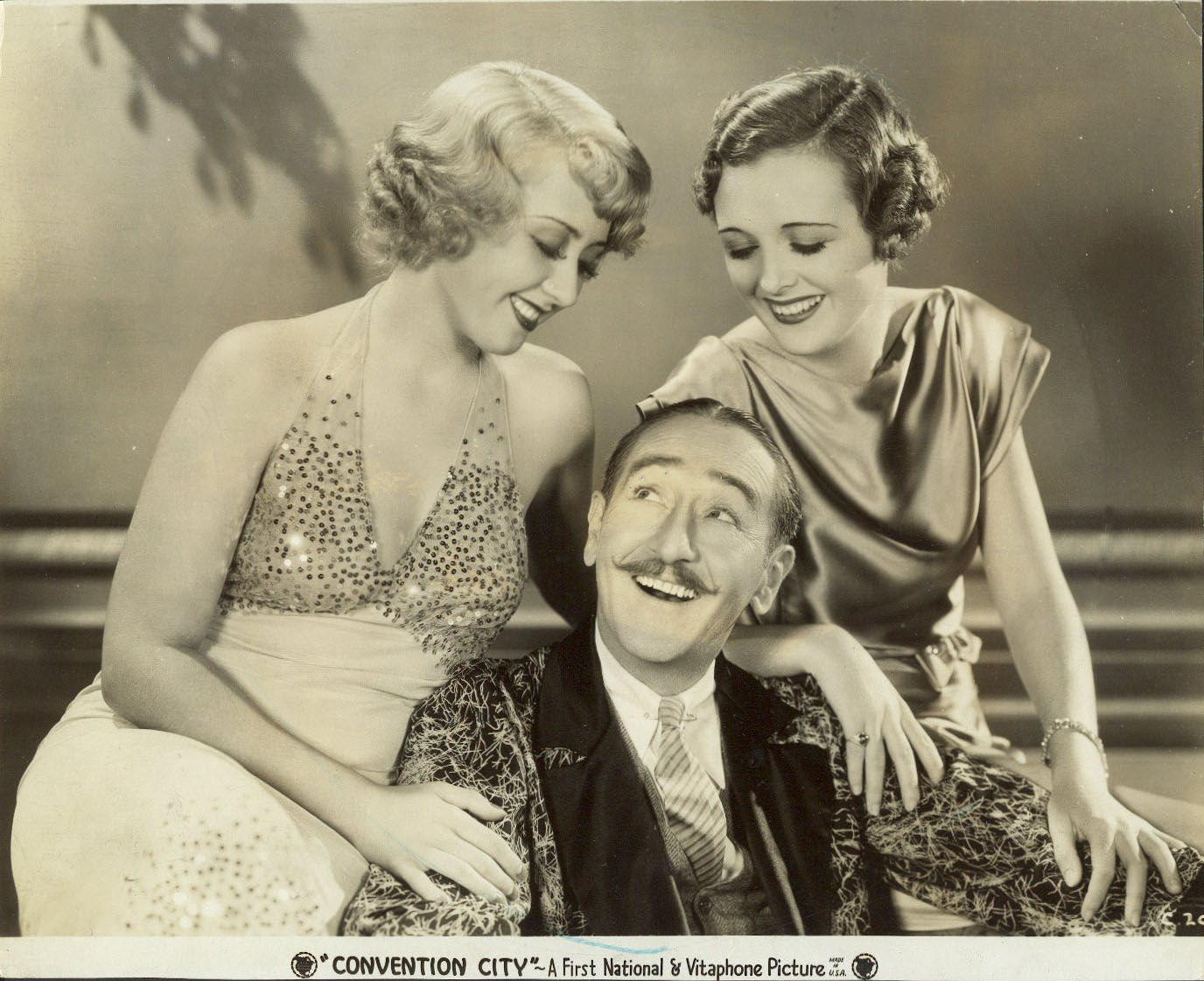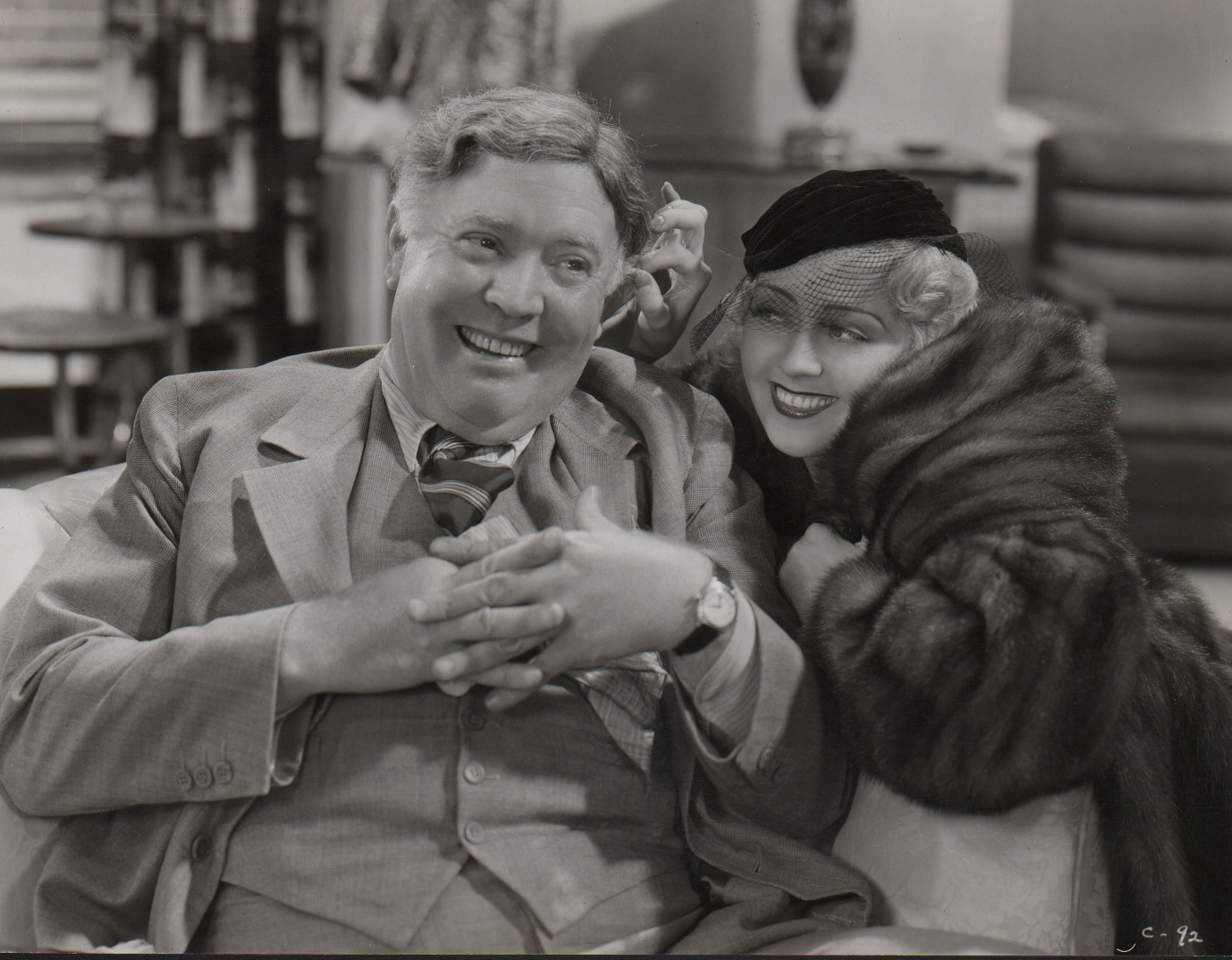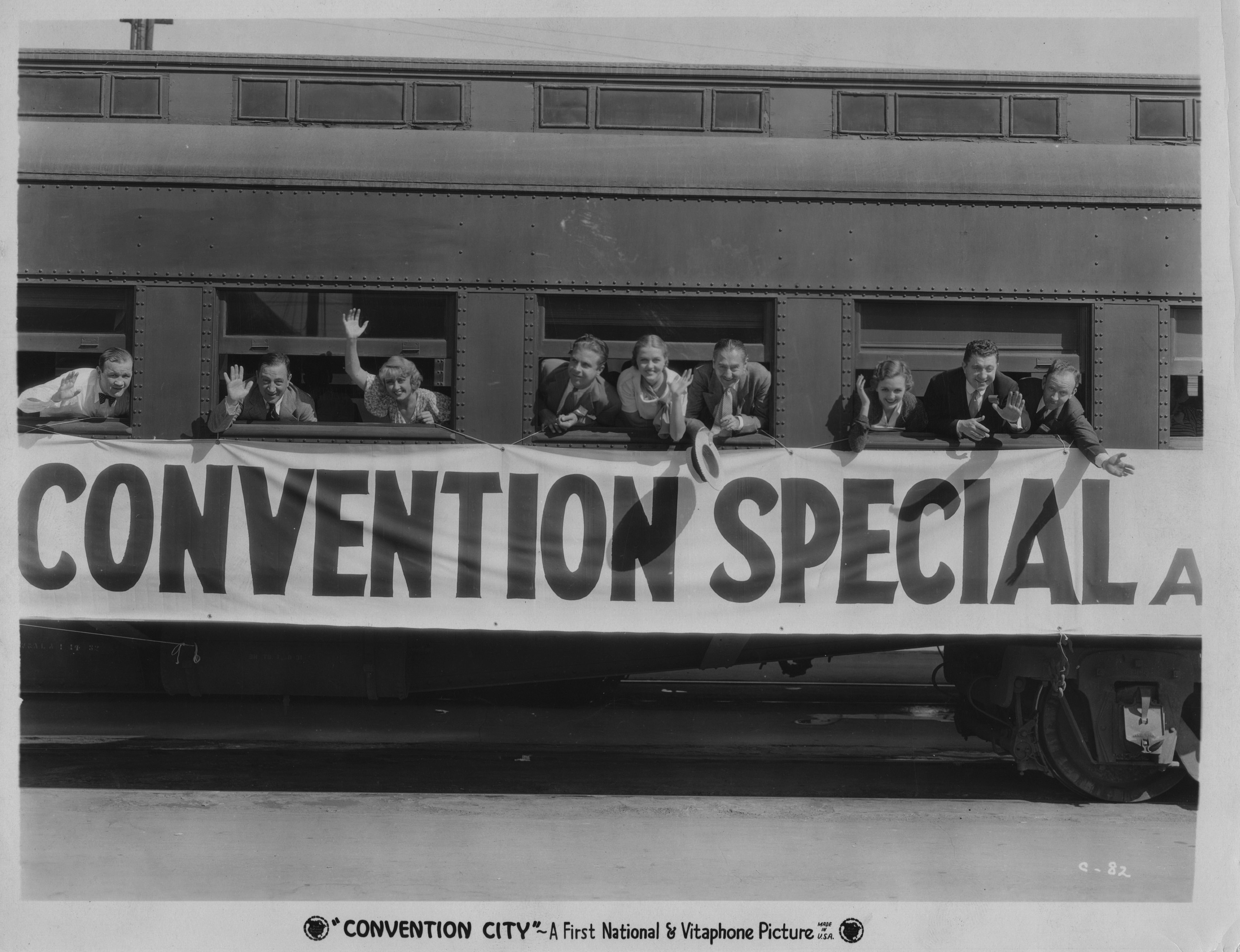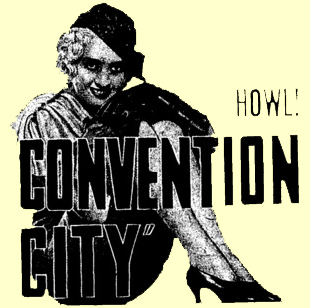Home
Convention City
Peggy English
Jane Green
Grey Gull Project
Marion Harris
Scrappy Lambert
Keller Sisters & Lynch
Ray Mayer & Edith Evans
Misc 1920’s
New 1920’s
1920’s Sheet Music
1930’s Vocalists
NJ Record Bash
Bee Palmer
Finding Bee Palmer
Pathé Rooster
Jack Pettis
Paul Specht AHO
Frances Sper
Aileen Stanley
Irene Taylor
Esther Walker
Margaret Young
Annette Hanshaw
Biography
Recordings
Sheet Music
Photos
Maxwell House Ads
Links
Brox Sisters
Photos
Recordings
Sheet Music
Movies
Bobbe Brox Obit
Cliff Edwards
Biography
Recordings
Movies
Books
Instruments
Sheet Music
Photos
Miscellaneous
Links
Ruth Etting
Recordings
Sheet Music
Movies
Photos
Jazz Age Links
Banjos
Dixieland Jazz
Search This Site
|
|
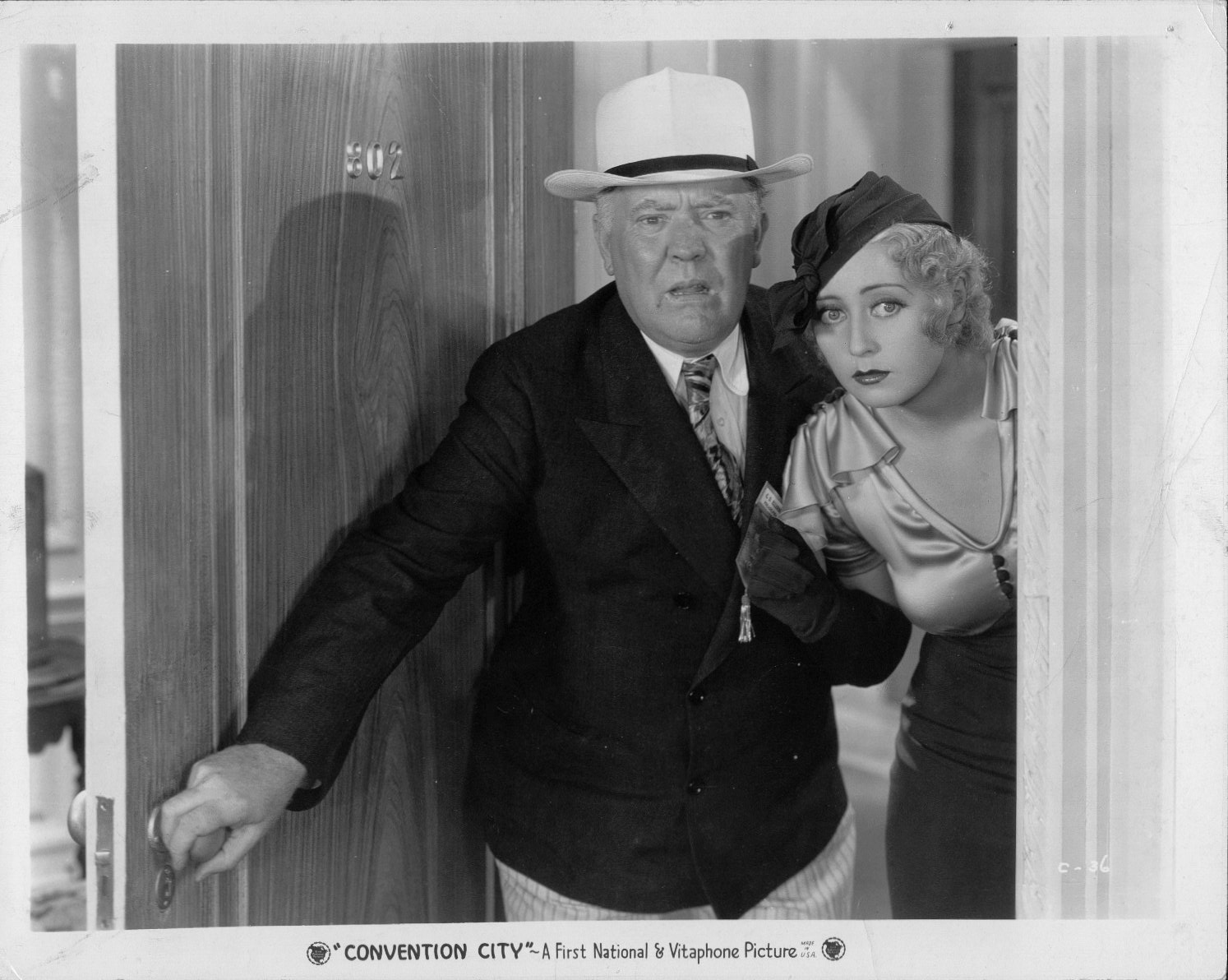
|
|
WHERE IS CONVENTION CITY HIDING?
by Ron Hutchinson, Founder
The Vitaphone Project
“Me, I was the one. Single-handedly I brought on the whole Code. Yeah. Ask Joe Breen. He’ll tell you. Ask him about Convention City,” boasted Warner Brothers producer Henry Blanke.
More than Lon Chaney’s London After Midnight, Laurel & Hardy’s Hats Off! or a long list of other lost films, Convention City’s apparent complete disappearance from the face of the earth has fueled myths about why it is gone, and just how risque the film really was. As of this writing, not a single print is known to exist.
Archives and studio vaults worldwide have been scoured. Private collectors polled. Foreign collections searched under the film’s French (La Folle Semaine) and Spanish (Que Semana !) titles. Nothing. Warner Brothers found that even the trailer for Convention City is among the missing. Tantalizing rumors of a lone nitrate print overseas surface, then dry up.
That not a single copy of this late Pre-Code comedy has turned up anywhere is hard to explain. Other Pre-Codes --- from Baby Face (1933) to Safe In Hell (1931) --- were far rawer and more unapologetic. Yet this one title is gone while all the others survive. It appears to be the most recent feature film from a major Hollywood studio that is totally lost. Digging into the “why” has actually given hope that this film might still be found one day.
By all accounts, Convention City was a well made, fast paced A-minus Warner Brothers comedy with a top cast. Jammed into its 69 minute running time were top stars like Adolph Menjou, Mary Astor, Dick Powell, and Joan Blondell, and they were supported by a distillation of the Warner’s comedy stock company: Hugh Herbert, Frank McHugh, Guy Kibbee, Ruth Donnelly and Grant Mitchell. In the director’s chair was Archie Mayo, who helmed Svengali (1931), Mae West’s debut in Night After Night (1932), The Mayor of Hell (1933) and The Petrified Forest (1936). His films were well made and tightly paced, perfect for the Pre--Code carousing of Convention City. Robert Lord wrote the screenplay, and was no stranger to crafting Pre-Code stories with bite and sex. The prolific Lord was responsible for Little Caesar (1931), Big Business Girl (1931), Frisco Jenny (1932) and The Merry Wives Of Reno (1934) (which immediately followed Convention City with a number of the same cast members).
So Convention City was no throw-away B picture. It had a solid $239,000 budget and domestically brought in $522,000 in rentals during its run in the early months of 1934. So why has it disappeared?
|
|
THE FILM
In his superb book Sin in Soft Focus: Pre-Code Hollywood (New York: Harry N. Abrams, 1999) [Ed.: purchase link in the right column of this page] author Mark A. Viera calls Convention City “a series of indelicate episodes occasioned by a convention of the Honeywell Rubber Company. In one, salesman Ted (Menjou) tries to edge salesman George (Kibbee) out of a promotion by seducing Claire (Patricia Ellis), the boss’s teenage daughter. Salesperson Arline (Astor) disapproves: “Ted, she’s only a child. You want to go to the pen?” “She’s old enough --- almost, anyhow.” laughs Ted. “I remember the year she was born.”
In under 70 minutes, Convention City revels in drunkenness, brothel visits, Blondell’s ample cleavage, endless trysts and a salesman tempting a goat up to his hotel room. Years later, Blondell recalled the film. “That is the raunchiest there has ever been... we had so many hysterically dirty things in it...no dirty words or anything like that, just funny, burlesque-y.”
Viera reports that Convention City averaged 20 cuts per state censor board. The Breen office concluded of the final cut: “While not as rough as the script indicated, it is nevertheless somewhat low-tone entertainment, long on drinking and rowdiness, but is fortunately free from any actual sex situations.”
By the time Convention City ended its run, the new Production Code Administration (PCA) was in full force, having opened on July 11th. The first film submitted for approval was John Ford’s The World Moves On (1934). It was approved with Certificate Number 1. But films that followed for review featured, as Viera notes, “a wife-beater, a kept woman, a fallen woman, and Mae West.” Major cuts on these and other features were required before the essential seal of approval could be attained. After mid-1934, virtually no Hollywood films were released without the PCA’s approval (Howard Hughes’ The Outlaw (1943) is a rare example).
The powerful rise of the PCA not only affected films prior to their release, but also the lucrative market for re-releases of popular features. Before being allowed to re-issue a Pre-Code film, the studio had to make PCA-mandated cuts. This requirement applied to such diverse titles as Dracula, Animal Crackers, Blonde Venus, Love Me Tonight, and Tarzan and His Mate. Unfortunately, certain titles were deemed by the PCA as never to be re-released, even with cuts. These included Baby Face, She Done Him Wrong, The Story of Temple Drake ---- and Convention City. But all of these other “Class I” films exist, while Convention City is nowhere to be found. Why?
|
|
THE MYTHOS OF CONVENTION CITY
Being a lost film attracts many tantalizing tales over the years. Rumors of secret screenings, bonfires of burned nitrate film, and worldwide searches for every known print to ensure destruction. In 2009, The Vitaphone Project decided to initiate a structured and comprehensive search into Convention City. This included seeking out relatives of those involved with the film, review of censor board reports, checks of archives worldwide, and whenever possible, debunking the myths so that the truth might be ultimately known.
Mark Viera indicates that:
“In 1936, Jack Warner submitted a list of of Class I and II titles to the PCA, hoping for permission to re-release them. One of them was Convention City. On September 3, 1936, Joseph Breen wrote him that no amount of cutting could make these films suitable for re-release. Warner was constantly being pestered by conventioneers who wanted, for obvious reasons, to rent Convention City. He found himself in an awkward position. He could not rent the film without getting into trouble with Breen, but he could not deny he had the film. Of course, if he did not have the film, he could not rent it. His solution was to destroy all prints, the negative, and the fine grain positive of the film which was, if not a work of art, one of the most enjoyable products ever to roll off the Hollywood assembly line.”
Or so the accepted story of Convention City’s fate goes.
But digging deeper suggests that nothing of the kind probably happened. First, some basic debunking of the myth: Warner did not have to destroy every vestige of the film to stay out of trouble with the Breen office. The PCA required no destruction of any film. Jack Warner could just say “no” to rental request, and be done with it.
|
|
While the myths allude to complete destruction in 1936, it is now clear that definitely was not the case. The Vitaphone Project uncovered proof that Convention City was still being shown in theatres as the bottom half of double bills at least as late as late 1937 (see above Chicago theatre ad). A flyer from that period shows it running with a Charlie Chan picture. So many prints were still being circulated and exhibited long after the alleged destruction and ban by the PCA.
|
|
Recently, it was confirmed (see ad above) that foreign prints of Convention City were being exhibited as late as World War II. The August 22, 1942 edition of Madrid’s ABC newspaper shows Que Semana! being screened at the Muñoz Seca Theatre. That is nine years after the film’s release and many years after the alleged recall and burning of all prints.
Further proof that the myth does not hold up: Warner Brothers own vault negative records state: “Junked 12/27/48.” This is 12 years after the all copies of the film was allegedly destroyed. And the 1948 ‘junking’ was solely due to nitrate deterioration, which left unchecked can create an explosive mix and major fire hazards. There is also no supporting evidence that all of the circulation copies of Convention City, both in America and overseas, were ever recalled or destroyed. It can be conservatively estimated that during its original worldwide release, there were over 500 35mm prints made.
And yet, right now at least, not one has been found.
|
|
A TANTALIZING FRAGMENT
While Convention City the film is still hiding, some tidbits do survive. the George Eastman House has a full key book of over 220 production and publicity still from the feature. They suggest a fun and breezy comedy with an all star cast at the height of their powers.
And while nothing of the theatrical release has yet been located, there is a little film that survives. John Leifert, a member of the Project who works for Getty Images, has the job of screening and categorizing newly acquired film footage. In the mid-1990’s, while screening 35mm film from a collection that included many establishing and background shots from Warner Brothers, his eyes it up. He was watching nearly 20 minutes of pristine, but silent, footage shot in Atlantic City that was intended to be used in Convention City. Extended shots on the boardwalk, signs proclaiming the Rudy Vallee show at the Steel Pier, amusement rides, and much more were included. In addition, there were multiple takes of aerial shots of the train approaching the Atlantic City station. These were likely intended for Convention City’s opening titles or first scenes. There were also multiple takes of staged scenes, including the conventioneers’ arrival at the Atlantic City station with the “Honeywell Rubber Company” banner on the train car’s side. There is even a double for a drunken Hugh Herbert!
|
|
THE SEARCH CONTINUES
The Vitaphone Project began in 1991, with a group of 78rpm record collectors and film buffs who decided to seek out the missing 16 inch soundtrack disks that accompanied the otherwise mute 35mm film of early talkies. Unlike the sound-on-film Movietone process, the sound-on-disk Vitaphone process, developed by Bell Labs and adopted by Warner Brothers, synchronized a separate shellac disk turning at 33 1/3 rpm in the projection booth. Over the years one element, picture or sound, was lost for many of the over 2000 shorts and features produced by this method between 1926 and the early thirties. To date, the Project has found over 3,000 soundtrack disks in private hands worldwide, and has worked with UCLA, The Library of Congress, Warner Brothers and many private collectors and funders, to restore over 100 short subjects and feature films.

Convention City theatre glass slide
And discoveries constantly turn up, so there is still hope that a print of Convention City will surface. Somewhere.
In the early 1990’s, The Library of Congress found they had the long-lost (mute) 35mm print of Al Jolson’s first talkie, A Plantation Act (1926) , made a full year before The Jazz Singer. The Project initiated a worldwide search and in less than a year located the only known accompanying soundtrack disk. Cracked in five places, the disk was restored and synchronized to the print by UCLA . Over 80 years later, it is again being exhibited.
Nearly 100 lost US films were found this year in Australia; two Technicolor reels of the otherwise lost Gold Diggers of Broadway (1929) were found in the 1990’s, and an average of 200 soundtrack disks are uncovered every year. With the internet, discoveries are being reported at a much higher frequency to the Project, which can quickly determine if a discovery translates into a restoration possibility.
While Convention City was not made in the Vitaphone sound on disk process, it was released under Warner’s Vitaphone brand and as a studio product is still of interest. So far, the Project has obtained copies of all the censor board notes, and what surfaces is that there were relatively few mandated cuts after all. Certainly far fewer than the other “Class I” Pre-Code features.
|
|
In one of her books, Joan Blondell claimed that at parties, she would trot out Convention City and screen it for guests. At the time the film was made, Blondell was married to her co-star in the film, Dick Powell, and had two sons. The Project tracked down both Richard and Norman Powell, who checked and confirmed that no prints of Convention City were anywhere to be found. So far, attempts to track down relatives of cast members, producers, and director Archie May, have been unsuccessful.
Is Convention City totally gone, never to be seen again?
Probably not. The initial myth-debunking indicates there was no mass destruction of every print, that it was a popular film worldwide for years after its release, that there was no real reason to destroy it, and that despite its reputation as a raw and risque picture, it had nothing on dozens of other Pre-Codes. Discoveries of films thought to be lost forever are occurring more and more each year.
So now, we just have to find it!
|
January 2012: Update from Ron Hutchinson at Vitaphone News
ANOTHER CLUE IN SEARCH OF THE LONG LOST “CONVENTION CITY”
Our quest to find the still lost 1933 Pre-code Warners Brothers CONVENTION CITY never ends. We are convinced that there survives at least one print of this popular and widely distributed film. Recently, we received a letter from John P. Darling of Westbury Wilts, England. His father was in the Royal Navy in WWII and John wrote that in September 1942, his dad saw a screening of CONVENTION CITY:
I was looking through one of my father’s old diaries from the war, and there it was, he was in the Navy, and in South Africa, at a place called Walvis Bay now Namibia, on the 14th September 1942 shown at the Railway Institute was Convention City and he saw it, maybe it still exists in some dusty vault there, it is worth a search you never know it might still be there?
This is the first confirmation that prints of the film were being screened for the troops during the war, almost surely in 16mm prints. This latest
tidbit has triggered a renewed search in a previously untapped area. We’ve already started contacts with our own Department of Defense, (thanks to Alex Hassan) overseas military agencies and elsewhere. Whether or not this latest lead will finally uncover a copy of CONVENTION CITY remains to be seen!
|
Ron Hutchinson was the founder of The Vitaphone Project. For more information on the Project, its discoveries, past issues of its newsletter, and stills from early talkies, go to www.vitaphoneproject.com. Sadly, Ron passed away February 02, 2019 in Piscataway, New Jersey. Ron is sorely missed for his contributions the Vitaphone Project and the Jazz Age film world.
Warner Home Video’s deluxe 3-DVD set THE JAZZ SINGER contains a fully restored version of the feature, 24 early restored Vitaphone shorts, nearly a dozen other shorts about the coming of talkies, and a 90-minute documentary, The Dawn Of Sound, which covers the transition from silent pictures to sound.
Now in Blu-ray!!

Click to Buy The Jazz Singer
Editor’s Note
If anyone reading this has additional information on Convention City or knows the whereabouts of the film, please do not hesitate to
email me.
|
|
Click on each image
for a larger view

Parthenon Theatre
Hammond, Indiana
March 5, 1934
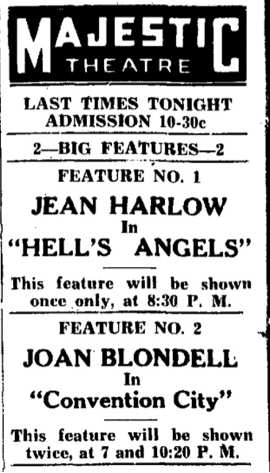
Late 1930’s ad
Rhinelander (Wisconsin) Daily News
September 17, 1937
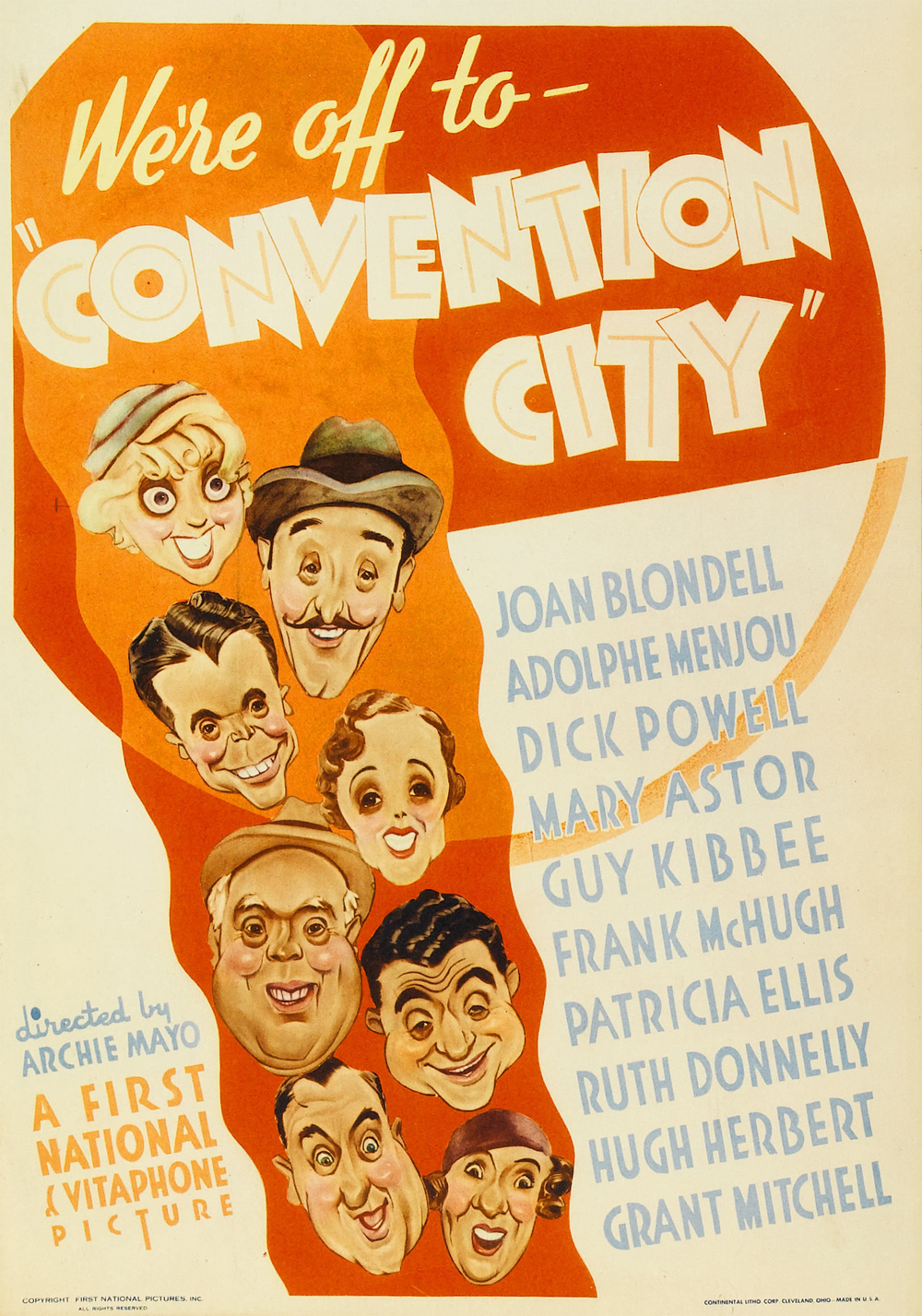
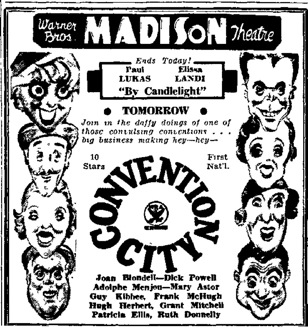
Manfield (Ohio) News
January 20, 1934
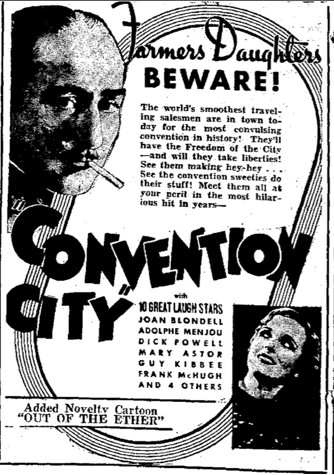
“Farmers Daughters Beware!”
Jefferson City (Missouri)
News And Tribune
February 4, 1934

Chicago Ad
January 1934
|







